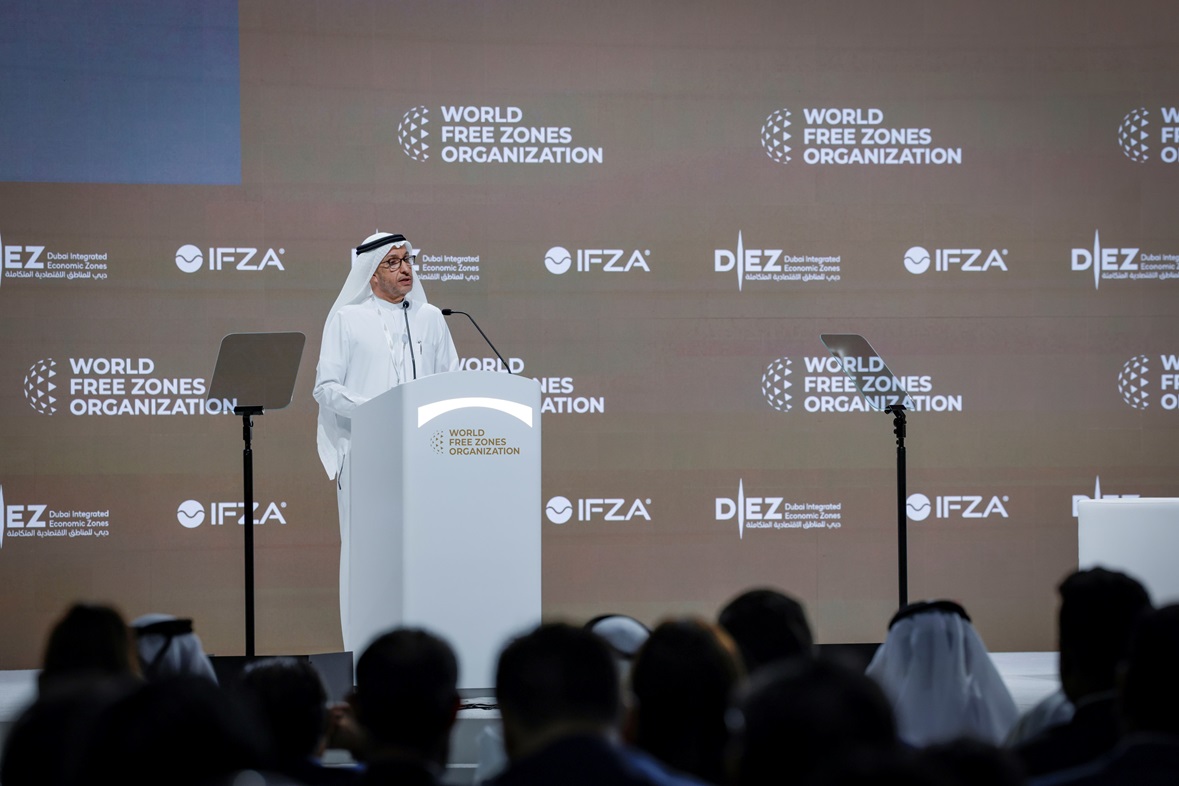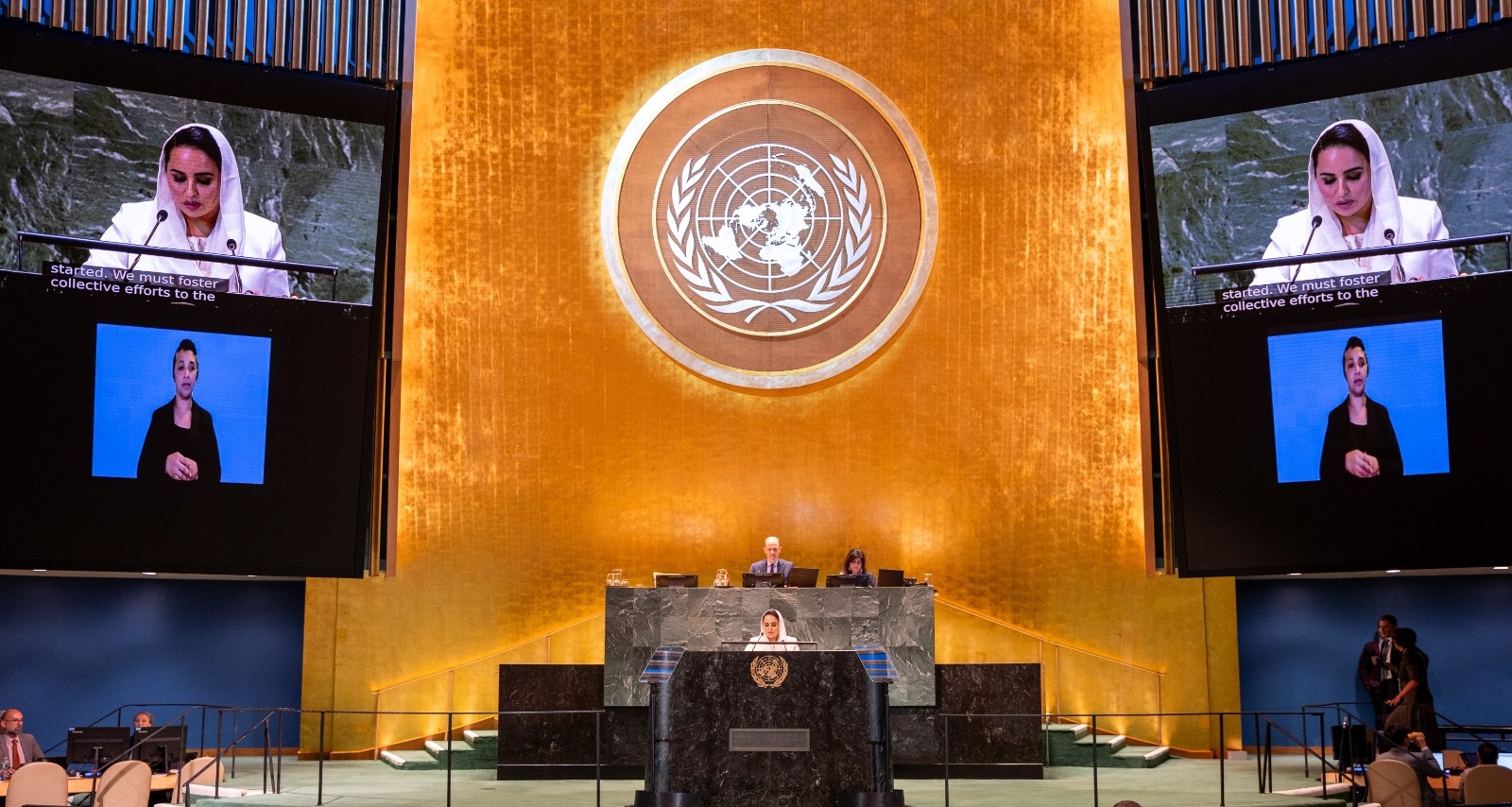ABU DHABI, 1st June, 2023 (WAM) — Louvre Abu Dhabi, in commemoration of the 50-year anniversary of UAE-Malta diplomatic relations, has unveiled two extraordinary loans from the National Museum of Archaeology, Valletta, and Musée du Louvre.
For the first time in over 240 years, a pair of ornamental pillars, known as cippi, will be showcased together at Louvre Abu Dhabi, open to the public from May 2023 to June 2024. These pillars, previously housed separately at Musée du Louvre and the National Museum of Archaeology, Valletta, signify the reunion of the cippi pair after being separated since 1782.
The display of the cippi will form part of the thematic concerned with crossroads of influences between East and West in Gallery 5 at the museum, which is devoted to Civilisations and Empires.
Maria Camilleri Calleja, Ambassador of Malta to the United Arab Emirates, said, “2023 is an important year for both our countries, Malta, and the United Arab Emirates, as we celebrate our Golden Jubilee – 50 years of diplomatic relations forged in 1973 – which continue to amplify year after year. Malta is honoured and privileged to have a solid relationship with the Department of Culture and Tourism Abu Dhabi, we can now see the fruits of this relationship through the work of two auspicious institutions being Heritage Malta and the Louvre Abu Dhabi. Their very dedicated and professional labour of love, also with the collaboration of the Louvre in Paris, has yielded a narrative of scholarly endeavour, but also mystery and adventure from the past, that takes us on a journey of discovery as to how these twin Cippi unearthed in Malta were separated by fate but reunited by design. This narrative can also be translated into an allegory of the ties between Malta and the United Arab Emirates which, although geographically apart and diverse, their will to work together has brought them to cooperate on many levels by people of good will, politically, commercially, in sports, on people-to-people levels, in research and innovation and not least in the cultural sector. This is the first-ever exhibition that Malta is putting up at the Louvre Abu Dhabi, but I am convinced, certainly not the last.”
Manuel Rabaté, Director, Louvre Abu Dhabi, said, “The reunion of these remarkable ornamental pillars at Louvre Abu Dhabi is a testament to our mission of telling stories of cultural connections. For the first time in over 240 years, these cippi will be displayed together, marking a significant moment in the preservation and celebration of our shared heritage. These loans showcase the power of art to bridge the gaps across times, geographies, and civilisations. Through this collaboration with the National Museum of Archaeology in Valletta, Malta and the Musée du Louvre in Paris, we have brought together these extraordinary pieces. This rare opportunity to see these cippi up close offers a fascinating and enriching experience for our visitors, underscoring our commitment to sharing the beauty and significance of cultural artefacts.”
Cippi, in the Greco-Roman world, were often inscribed with information, acted as border demarcations, milestones, funerary monuments, or, in some instances, possible temple dedications to divinities. In the case of the cippi temporarily displayed at Louvre Abu Dhabi, their flat tops might have been used as a support surface to hold dshes for burning incense or presenting offerings.
The two ornamental pillars, which date to the 3rd or 2nd century BCE are decorated with beautifully carved alternating acanthus and lance-like leaves and set on rectangular bases, both of which contain identical inscriptions in Phoenician and Greek script.
The writing confirms the equivalent identification of the Phoenician god Melqart, with the Greek hero Herakles, and signifies the successful exportation of Phoenician gods, language, and culture, beyond the trade of goods, as part of Mediterranean commerce.
It was the Greek inscriptions on the cippi of Malta that were key in deciphering the Phoenician alphabet in 1758 by Abbé Barthélémy, a French epigraphist, much like the ancient Greek text on the Rosetta Stone held the key to deciphering Egyptian hieroglyphs in 1822. Following this deciphering, one of the cippi was offered to France by the Order of Malta.
Noel Zammit, Heritage Malta’s Chief Executive Officer, said that Malta has maintained strong ties with the United Arab Emirates, and both countries are actively collaborating to further strengthen this relationship through cultural heritage diplomacy. To achieve this, the two nations are engaging in a cultural dialogue involving three countries. This represents a significant stride towards this goal. Additionally, this marks the first time that Malta is partnering with the Abu Dhabi Louvre, and it is hoped that this collaboration will foster a promising future for the relationship between the two entities.
“With the loan of the cippus to Louvre Abu Dhabi, we are reminiscing collaborations and diplomatic relations which happened in the 18th century, when copies of the cippi were sent abroad for decipherment. Consequently, in recognition of decipherment by Barthelemy, the Order of the Knights of St John offered one of the cippi to the Academie des Inscriptions et Belles Lettres. This arrived in France in February 1782,” said Zammit.
Since its opening in 2017, Louvre Abu Dhabi has established significant international partnerships through mutual loan agreements that shed light on the world’s history and cultural heritage. The expansion of international cooperation remains a priority for Louvre Abu Dhabi and these partnerships include extending loan agreements with Jordan, Saudi Arabia, Oman, South Korea, and the Philippines.
Programming around the Special Installation
A newly built niche will highlight the special display of the cippi, which will be accompanied by a series of cultural engagement, mediation and educational initiatives, comprising: the inclusion of the cippi to Louvre Abu Dhabi’s app, an audio commentary interview, a teacher and children’s resource, dedicated tours and workshops during the ‘Art Lab’ schedule, as well as the inclusion of the cippi in the museum’s ‘Drawing at the Museum’ and ‘Art History Walks’ activities.

 World3 years ago
World3 years ago
 World3 years ago
World3 years ago
 Business1 year ago
Business1 year ago
 Entertainment7 years ago
Entertainment7 years ago
 World7 years ago
World7 years ago
 Entertainment7 years ago
Entertainment7 years ago





